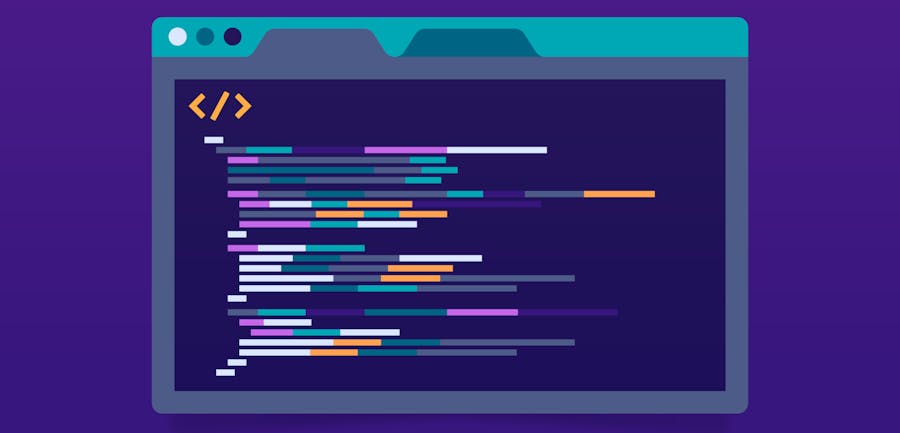Search engines are trusted by users around the world to provide the best information possible for the questions that they have about topics. When someone searches for “mortgage rate trends from 2020 to 2023” for instance, they are trusting Google (and we are going to use “Google” from now instead of “search engines” since Google has a 91+% market share in the search engine space) to give them the best information for that question they have. In the case of this particular search, the first result on Google is this page, which seems like a fine enough page to point searchers who are looking for that information to. But what did Bankrate do on their website to make Google choose this page as the top result for that search? We will not be going into any sort of assessment of exactly how Bankrate got to the top spot in Google in this blog post, but the general answer to that question of how they got that top spot is search engine optimization.
Search engine optimization (SEO for short) is the process of improving a website or specific web page on a website with the intent of increasing its visibility on Google so that people who are looking for that content can find it. It all sounds fairly straightforward, but SEO and internet marketing consultancy is $76B+ industry filled with all sorts of folks with all sorts of theories and all sorts of practices that they say are critical to ranking well. Suffice it to say that SEO can be a very convoluted and contentious topic, but the remainder of this post will focus on how Valitics suggests that our clients understand the different aspects of SEO. Our perspective is based on 15+ years of improving rankings for our clients.
Types of SEO
The work of doing SEO breaks down into three separate types of SEO:
TABLE OF CONTENTS
On-Page SEO

On-page SEO focuses on what words you put on a page, and how you put them there. This branch of SEO tends to be a bit more subjective than technical SEO for instance because it’s driven largely by your business goals.
Consider two different types of companies: a roller skate company and a HR consultancy. Most people are more likely to research and buy roller skates online than they are to hire an HR consultant, which suggests the roller skate company will probably be more successful using on-page SEO tactics that target search phrases with research and purchase-oriented intent (e.g. “where to buy roller skates,” “best roller skates to buy 2023,” etc.) while the HR consultancy will likely get more visibility on Google by creating content on their website that target searches such as “work-from-home HR issues” and “do millennials care about vacation time?”

Do you have questions about SEO? We are here to help.
Reach out to us with any questions you have about SEO. Our team is ready to help with any SEO questions you are wondering about.
Contact ValiticsWhat business you are in and what your goals are with your website can sway your overall on-page SEO focus, but there are some universal aspects that all websites should have in place to have a solid on-page SEO setup:
- Keyword and Key Phrase Research and Optimization: Keywords and phrases are the foundation of on-page SEO. Keyword research is the process of identifying the right keywords that your target audience uses in their searches. Proper keyword inclusion and optimization in your site content ensures that Google will understand the context and relevance of your content, enhancing your chances of appearing in search results about those topics.
- High-Quality Content: Content is the heartbeat of your on-page SEO. Craft informative, engaging, and valuable content that resonates with your key audience(s). Google rewards pages that provide substantial, useful information, thereby boosting rankings.
- User Experience and Readability: Your site’s content should be easily digestible for site users. This includes proper formatting, use of headings and subheadings, and generally ensuring readability. A well-structured page keeps visitors engaged and encourages them to keep reading.
- Content Freshness: Regularly adding new content (and updating your existing content) ensures your site’s continued relevance. Google favors sites that provide fresh, current data.
Mastering on-page SEO is a fundamental step toward improving your website's visibility and rankings in Google.
Section Recap
On-page SEO is all about the content on your website.
Off-page SEO

Off-page SEO pertains to your website’s reputation according to other websites. Off-page SEO harkens back to one of Google’s original innovations where they measured links between websites. Google ranked sites that had more links from other sites (aka “inbound links” or “backlinks”) higher than sites with fewer backlinks. This innovation created an entire sub discipline within SEO called link building. Link building entails a variety of activities designed to influence other websites to link to your website, but link building is not the only off-page SEO tactic. As search engines gained sophistication, they began factoring other off-page elements like online reviews and expert recommendations into their search ranking algorithm as well.
There are a few central ways that site owners can build up and reinforce their off-page SEO profile:
-
Link Building: Link building is a central component of off-page SEO. It involves acquiring backlinks from other authoritative websites. What makes a website authoritative can vary based on your specific website, its focus, and its content, but think of authoritative websites generally as being highly relevant to the topic of your website/webpage from respected sources. Backlinks act as votes of confidence in your content and can significantly boost your Google rankings.
Think of backlinks to your site as recommendations from trusted sources, much like if you were an up-and-coming artist who paints landscapes and Bob Ross had stated how much he enjoyed of your painting technique; other folks knowing that Bob Ross loved your work would likely make a big difference in their minds in terms of how they’d perceive your paintings.
- Social Media Engagement: Social media plays a crucial role in off-page SEO. Engaging with your audience, sharing your site content, and generally building a trusted and a participatory reputation on social media can increase your website's visibility and positively impact Google rankings.
- Online Reviews and Reputation Management: Online reviews and ratings matter both to site users and Google. Encouraging positive reviews and actively managing your online reputation can enhance your website's trustworthiness and credibility.
- Guest Blogging and Content Sharing: Writing guest posts for authoritative websites in your niche and sharing your content on platforms like Medium or LinkedIn can help you reach a wider audience and establish yourself as an industry authority. This can funnel people who find you elsewhere online back to your website.
- Brand Mentions: Even without a direct link, brand mentions on other websites can improve your online visibility. Google considers how often your brand or website is referenced online as a proxy for how relevant, engaged, and important your site is for certain topics and searches.
Mastering off-page SEO is essential to enhancing your website's online authority and ranking higher on Google results pages. While it requires building relationships and engaging with the wider online community, the reward for doing so can be more visibility and higher ranking in Google.
Section Recap
Off-page SEO is all about what other people say about your website.
Technical SEO

While on-page and off-page SEO focus on website content and reputation, respectively, technical SEO deals with the behind-the-scenes aspects that contribute to a website's performance in Google rankings. You can’t just look at a webpage and assess its level of technical SEO, but it can have a big impact on your search rankings. Technical SEO has the primary goal of helping the Google, Bing, and other search engine robots assess and understand your website, its purpose, its content, and how helpful your website will be to searchers looking for the information your website offers.
Technical SEO is a much more objective endeavor versus on-page and off-page SEO activities, and it’s the SEO sub-discipline where site owners have the most control over their own destiny in terms of search engine visibility.
Below are several key aspects of technical SEO that should be in place on any well-optimized website.
- Structure: Structure is the technical SEO element focused on the HTML rendered by your web browser. It’s essentially a set of best practices to apply to any website, and it involves which tags are used in different situations, as well as various technical configuration options. Good structure is an essential building block for technical SEO because it provides better context and less ambiguity for both search engine crawlers and site users.
- Performance: The performance and speed of a website is an important aspect to site users having a good experience. Improving the performance of a site from an SEO perspective involves meeting benchmarks defined by a set of metrics called Core Web Vitals. Attention spans are short and web pages must load fast to meet people’s expectations. According to Google, 53% of visitors abandon pages that take more than 3 seconds to load.
- Accessibility: With around 13% of Americans living with some form of disability, there are over 42 million people in the country who may not be able to fully experience your website if it has not been made to be accessible to them. This is where technical SEO’s third element, Accessibility, comes into play. Some examples of accessibility practices include improving the screen reader experience on web pages and selecting colors with enough contrast to show up to the visually impaired. These accessibility enhancements don’t benefit just those with disabilities though; a lot of accessibility enhancements (like having high-contrast text and using larger font size) will make the website be easier to use for all users.
- Mobile-Friendly: With the ever-increasing use of mobile devices, Google prioritizes mobile-friendly websites. Ensuring responsive design and mobile optimization for existing and future devices is a key aspect of technical SEO.
- Schema Markup: Implementing schema markup on your website provides additional context to search engines about the content on your pages. This can enhance the display of rich snippets in search results, thus improving click-through rates and more organic traffic.
- Security: Google considers website security a ranking factor. Most browsers also warn site visitors when they are visiting an unsecured website, which can decrease site visitors’ trust in that website. Using HTTPS encryption on websites secures user data, enhances the trust site visitors have in your website, and can positively influences search engine rankings.
Section Recap
Technical SEO is all about how your website is constructed in the code and behind the scenes.
Take a Human-First Approach

Now that we have overviewed the three general types of SEO that exist, it’s a good time to provide a frame of reference and overall philosophy that we here at Valitics have on the practice of SEO. Google is by no means a perfect company, to say the least, but their call for helpful, reliable, people-first content resonates with us. That concept is infused deeply within our company culture, and as a result, our day-to-day work in the field of SEO. Our philosophy on SEO basically boils down to the Golden Rule – create your website and execute your SEO strategy in ways that will help your site users as much as possible, as though you were the actual user of the website.
Some people are tempted to look at SEO through the lens of “how can I appeal to the Google robots?” or, worse, “how can I trick the Google robots and jump the curve?” Many businesses try to game the algorithms without considering their actual visitor’s experience. Over the years, we’ve seen many cycles of websites gaining ill-be-gotten traffic only to be hit with a penalty later down the road and paying a big-time price for it. One notable example of this was Rap Genius back in 2013.
Rap Genius cultivated a network of bloggers who were given publicity from Rap Genius in exchange for them linking to specific song lyrics on the Rap Genius site that Rap Genius was trying to rank higher for in Google. At the time, this tactic worked for Rap Genius for a while even though those links from the bloggers were coming from posts that oftentimes had nothing to do with the content on the Rap Genius website. Rap Genius was basically trying to get a lot of links to their site through these means, versus creating good content and ensuring related websites knew about that content, and linked to it naturally. It was a quantity of links play versus a quality of links play. The Rap Genius "affiliate program" didn't fly with Google though, and they basically swept Rap Genius’ website out of its search results within a few days of learning of the scheme Rap Genius had going.
SEO can seem like a really complex, confusing, and hard-to-master topic for people new to it, and even for people like us who have made it a big part of our careers, but with a solid understanding of the general ways that SEO can be improved (via on-site SEO, off-site SEO, and technical SEO techniques) and having a strong understanding of why you are doing SEO in the first place (which for Valitics is to deliver site users the best information possible, because that’s what we’d want if we were those site users), SEO can be a powerful means to accomplishing your digital marketing goals.
What's Next
From here on, our series will focus on technical SEO. The next post in the series takes a deeper dive into structure and covers topics like How to decide which heading to use and Which type of redirect is best. As the series continues, we'll post articles about performance and accessibility. Stay tuned!
More from Valitics SEO Series
- Part 1: Site Structure
- Part 2: Performance (coming soon)
- Part 3: Accessibility (coming later)
